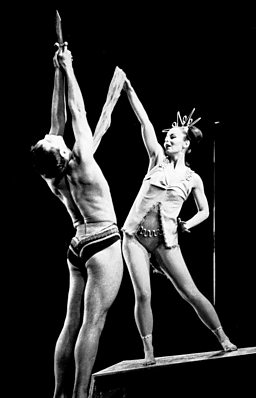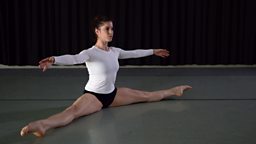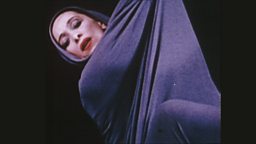The mother of us all: Paul RW Jackson on Martha Graham
17 April 2015
Contemporary dance great Martha Graham defined a new mode of movement and expression in her long career, during which she collaborated with some of the leading artists of her time. Here, PAUL RW JACKSON writes about her influence on the form.
is one of the categories featured in .

A question frequently asked of contemporary dancers is ‘ So what do you do?’.
The answer is always convoluted, ’well, it’s not ballet, not jazz, not tap, not street, though it may include elements of all these and more; or it may include none’.

Life today is nervous, sharp and zigzag. It often stops in mid-air. That is what I aim for in my dancesMartha Graham
Contemporary dance is a tree with many branches and it continues to expand and grow, adding new styles, moves and approaches as the years move on.
Each of its dancers and choreographers as individuals have contributed something of themselves.
The myriad names, just in Britain, include Robert Cohan, Mathew Bourne, Wayne Macgregor, Akram Khan, Richard Alston, Christopher Bruce and Siobhan Davies. But all owe the success of what we have today to the early pioneers.
The roots of this vast ‘tree’ straddle the Atlantic and can be traced back to the USA and Germany at the beginning of the twentieth century.
In Germany, Rudolph Laban began his experiments in movement - and movement observation - which would ultimately lead to the dance theatre of and .
In America, threw away the corsets and tight clothes expected of woman at the time and rejected the formal approach of ballet.
Duncan began exploring movement starting from the solar plexus and the breath, and stormed Europe with her impassioned liberated and liberating dances to great pieces of music.
At the same time, Ruth St Dennis and her husband Ted Shawn began their company Dennishawn. They turned traditional dances from India, Japan, China and the Middle East into popular theatrical extravaganzas.
Out of their school came a number of dancers who went on to shape the world of contemporary dance, developing it from mere spectacle to dances that would change the world.
One of the most significant was Martha Graham (1894-1991), a stunning dancer, choreographer, teacher and fiery personality who is seen as the mother of contemporary dance.

Over fifty years she developed a technique for training dancers that is as developed as ballet - which took two hundred years to evolve. It is radically different from that style, making effort, weight and ‘the landscape of the soul’ visible.

The simple act of breathing is developed into a contraction and release, where the spine and torso are stretched and create a tension like a wound spring. This can be released with many dynamic colourings.
As she said ‘Life today is nervous, sharp and zigzag. It often stops in mid-air. That is what I aim for in my dances’.
The technique has a clear relationship to the floor and to gravity; Graham believed that the fall is the acknowledgment of the power of gravity. Many of the exercises in the Graham syllabus require the dancer to fall powerfully into the floor.
The animal and athletic nature of her work can be seen in the names of some of the spectacular jumps, including the ‘stag’ and ‘bison’.
As a teacher, Graham trained and inspired generations of fine dancers and choreographers. Her pupils included such greats as Alvin Ailey, Robert Cohan, Twyla Tharp, Paul Taylor, Merce Cunningham, as well as many actors including, Robin Williams, Woody Allen, Gregory Peck, Bette Davis, Eli Wallach and a newcomer called Madonna.
In the 1960s Robert Cohan (a former Graham Dancer) and Robin Howard founded the London Contemporary Dance Theatre and school. Their work saw Graham’s methods developed for a British aesthetic and the vast wealth of contemporary dance we have in the UK today owes its existence to ‘the mother of us all’.
Paul RW Jackson is Reader in Choreography and Dance at the University of Winchester and is the biographer of Robert Cohan.

Martha Graham Quotes
- “The spine is your body’s tree of life. And through it, a dancer communicates; his body says what words cannot.”
- “The arms start from the back because they were once wings.”
- "Dance is the hidden language of the soul of the body."
- "Great dancers are not great because of their technique, they are great because of their passion."
- "There is a vitality, a life force, an energy, a quickening, that is translated through you into action, and because there is only one of you in all time, this expression is unique."



